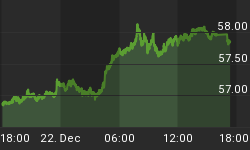Discovery
We unexpectedly discovered two sets of conditions preceding every major S&P 500 peak since 1965! We coined such signal the imminent Credit Complacency Crash - CCC. When these two sets occur, it always (so far) caused major stock market crashes. We define a crash as a decline of more than -15%.
We believe our CCC model could have direct applications mostly in tactical asset allocation and risk management for institutional clients. How did we discover this innovative model? This time, we had the intuition of back testing both our Lending Cycle and Financing Cycle anticipatory indicators.
Both of these anticipatory indicators lead CB LEI Y/Y by at least 12 months. Given the S&P 500 Y/Y lead Real GDP Y/Y by 3-6 months and CB LEI Y/Y had a consistent lead of 3 months over Real GDP Y/Y, we can estimate having between 6-9 months of lead on the S&P 500 when we combine both these indicators.

Note: Scales are inverted Source: EMphase Finance
Conditions
Lending Cycle above 10% (broad).
Financing complacency:
Financing Cycle above 8% (corporate).
Overbought:
S&P 500 at 3-year high.
Overvalued:
S&P 500 as reported P/E greater than 18.
Lending Cycle above 10% (broad).
Financing complacency:
Financing Cycle above 8% (corporate).
Overbought:
S&P 500 at 3-year high.
Yield pressure:
M Treasury Yield higher than 12 months ago.
Before we display our results, take note we observed these two sets of conditions on a monthly closing basis. We used S&P 500 data as reference. We trailed all these signals for six months except for the P/E in order to match sub-signals. We also eliminated multiple signals by only taking the first signal given.
Results
Take a look at the chart below. And no... We didn't cheat by manually pin pointing S&P 500 peaks on an Excel spreadsheet. These are the actual and concise results from rules explained earlier. We believe these two sets of rules do make sense and respect our K.I.S.S. (Keep It Simple & Sweet) philosophy.

Source: EMphase Finance
See below the summary of all CCC signals. First column is date of occurrence, second column is monthly closing price at signal, third column highest monthly closing seen following signal, fourth column is lowest monthly closing seen following signal and fourth column is the awful S&P 500 return seen:
CCC signals | Price | High | Low | Return |
31/03/1965 | 86.16 | 92.88 | 76.56 | -17.6% |
30/08/1968 | 98.86 | 108.37 | 72.72 | -32.9% |
31/03/1972 | 107.20 | 118.05 | 63.54 | -46.2% |
29/07/1977 | 98.85 | 98.85 | 87.04 | -11.9% |
30/06/1981 | 131.21 | 131.21 | 107.09 | -18.4% |
27/02/1987 | 284.20 | 329.80 | 230.30 | -30.2% |
28/04/2000 | 1452.43 | 1517.68 | 815.28 | -46.3% |
31/01/2007 | 1438.24 | 1549.38 | 735.09 | -52.6% |
The average decline following our CCC signal is -32.0%. Note the loss in 1977 is more than -11.9% and below -15.0% if we are taking daily data instead. Moreover, S&P 500 declined more than -15.0% in 1998 and we didn't get a CCC signal but it is not an issue and debatable considering equity peaked in 2000.
Conclusion
How to exploit a CCC signal? When it happens, we suggest to closely monitor S&P 500 price movements with various tools for an imminent reversal. For example, simple technical indicators or sentiment indicators may help on a short-term horizon identify the right moment to adopt a more bearish stance.
Our CCC signal is probably one of the best indicator of S&P 500 peaks available and is yet undefeated with no false signal. Based on this model only, there is no equity meltdown in sight. This corroborates our view the U.S. economy recovered from the latest recession and is now back in expansion mode.
Sources
BB, BC, BEA, BLS, CB, CBO, CBOE, ECRI, FHFA, FRB, GOOG, GSCI, ISM, MBA, MC, NAHB, NBER, S&P.















